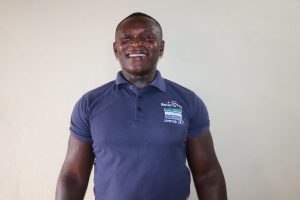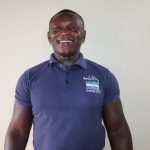The series of Bross villages were once isolated communities that recently became more welcoming and open. The founding father of this village was a hunter. The village is surrounded by thick patches of bushes, the type where wild animals like to roam. Development has not touched any part of this community. The homes are primarily on one side of the road that leads to the stream. Here, settlements are always made based on accessibility to a water source, and the only way to keep away from the hot sun is to take refuge under it.
The road leading to the village is gravel with sharp granite stones that cause damage to bikes and cars. Mango trees are planted in front of the homes as well as along the footpath to the stream. Families scramble to pick the fresh fruit to sell at the Luma day open market as a way to make a small income.
The 100 people living in Bross 3 are surrounded by fertile lands that span the Bross villages. There is a stream that runs into the villages used for fishing while also serving as the community's primary source of water. The stream is increasingly unreliable and unsafe for drinking.
During the dry season, the stream reduces significantly. The long and treacherous walk to the stream is discouraging enough on its own, let alone reaching the water to find so little available. Children are strongly discouraged from traveling to the stream alone due to the risks that could befall them along the way.
"I remember when I was a kid in the village, going to the stream at that age was a big adventure - an adventure that would have me holding a stick and singing loudly along the way. I was surprised to find, some 40 years later in another part of the country, children holding sticks and singing going to the stream or farms," shared one of our field officers.
"My thought back then was for all fun and games, not knowing it was a technique parents and elders used to have the children singing or talking loudly to drive off any dangerous and poisonous animals that might be lurking on the footpath."
All of this effort is to get water that makes people sick. The stream is prone to contaminants and runoff. Grass grows on top, on the side, and all around the water source, with people indiscriminately bathing anywhere they choose. Those fetching water have to walk knee-deep into the stream to get what may look like the best quality of water available. People contract diarrheal and waterborne diseases from drinking the water.
"I have lived in the village all my life and plan on being here for the rest of my life. The reason some communities thrive and some go under is quite simple: sufficient and sustainable access to a good water source," said Ousman Sesay, a local farmer.
"Our water crisis is starting to be very dangerous because, each year, there is less and less water in the stream. The only water stored in good supply is for drinking and cooking. All our other activities, such as laundering and bathing, are done at the stream."
What we can do:
New Well
We will be drilling a well in a central point in the community to relieve many people of the long journey to fetch water. This project will ease the people here of their water challenges.
Our team will drive over the LS200 mud rotary drill rig and set up camp for a couple of nights. Once the well is drilled to a sufficient water column, it will be cased, developed, and tested. If these tests are positive, our mechanics will install a new India Mark II pump.
"I spend the better part of the day fetching water to reach the amount that is required of me every day. I will be happier than anyone to have the opportunity of having access to a borehole in the village junction," said Fatmata Bangura.
By drilling this borehole, the well will provide Bross 3 Village with plenty of accessible, clean drinking water.
Training
Our team will offer hygiene and sanitation training sessions for three days in a row. Community members will learn how to make a hands-free handwashing station called the tippy-tap. We will use these tippy taps for handwashing demonstrations and will also teach about other tools like dish racks and the importance of properly penning in animals. We will highlight the need to keep restrooms clean, among many other topics.
This training will also strengthen a water user committee that will manage and maintain this new well. They will enforce proper behavior and report to us whenever they need help solve a severe problem, like a pump breakdown.

 Borehole Well and Hand Pump
Borehole Well and Hand Pump
 Rehabilitation Project
Rehabilitation Project






























